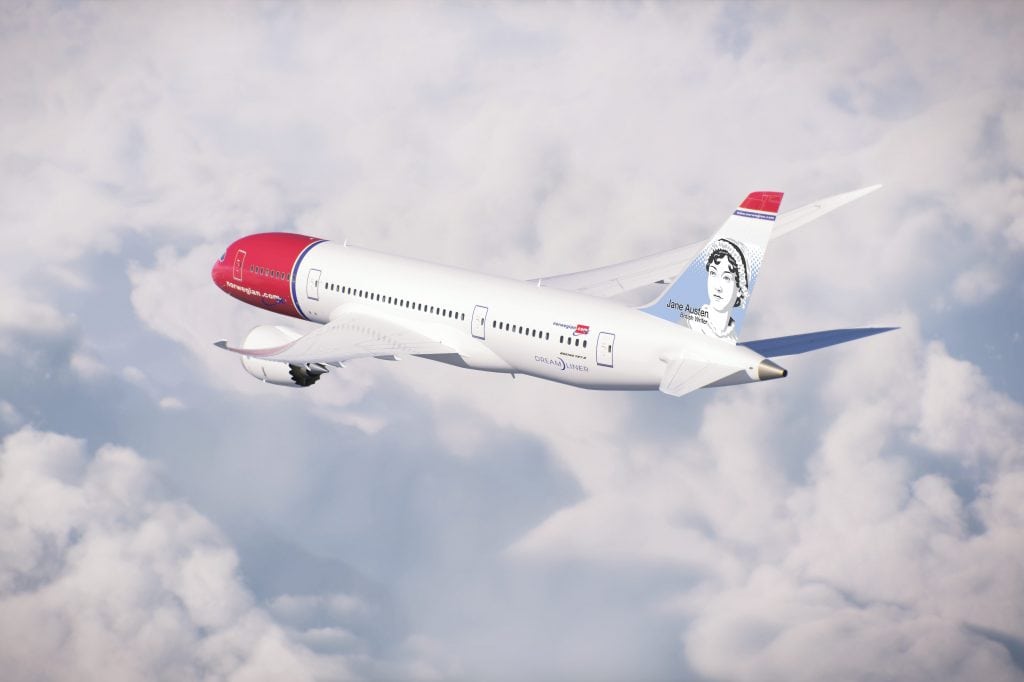Skift Take
Norwegian's critics say it is overstretched and unprofitable. So how does the airline counter this? By ramping up its expansion, of course.
Last year was very, very bad for Norwegian Air. The airline swung from a pre-tax profit of $194 million in 2016 to a loss of $137 million in 2017.
“We are not at all satisfied with the 2017 results,” CEO Bjorn Kjos said earlier this week.
Despite operating since the early 2000s, Norwegian is still acting like a start-up: burning lots of cash on an aggressive expansion plan with the hope of achieving sufficient scale later.
Part of the problem last year for Norwegian was that it needed to bring in more people to fly its ever-increasing number of planes.
“Obviously you need to build up a network and it takes time, and there aren’t any certified and available 787 pilots – it means that you have to train them. Last year we took in more than 600 pilots and that is not free… you have to do it,” Kjos told journalists at a media event in London before the release of the company’s full-year results on Thursday.
“Yes, you could say you can do it at a slower pace but one should also think about the reason that we do it is the availability of slots. In two, three years we won’t have available slots in New York as an example.”
Norwegian blamed its loss in the fourth quarter partly on this international growth. Total operating expenses, excluding leasing and depreciation, for the three months to the end of December increased by 60 percent to $955 million.
Why 2018 will be Different
The airline believes that things will be very different in 2018. Norwegian has made inroads on pilot recruitment and route development and by the second half of 2018, it plans to have 32 of the 42 Dreamliners on order in service.
“This year you will see us just putting on more and more frequencies. Actually, two thirds of our expansion is coming from… existing routes so its easier for us now this year to expand than it was last year,” said Kjos.
That won’t be the end of expansion though. In its presentation to investors, Norwegian outlined its route development strategy for the next three years, saying it would: “Maintain short haul within Europe, grow medium/long haul between Europe and the rest of the world & exploit new/underserved markets”.
The addition of the Airbus A321neo LR to the fleet in 2019 will open up more routes. The narrow-body aircraft has a range of 7,400 kilometers and could fly between Paris and New York. Norwegian has 30 firm orders in place and could use the jet to service the Middle East and West Africa from Europe.
The airline also wants to add routes in Asia. At the moment it only flies to Singapore and Bangkok. To add more routes Norwegian wants access to fly through the so-called Siberian corridor over Russia. Currently, a Soviet-era deal allows only one airline per country to use the airspace.
More Business Passengers
Long-haul airlines typically make a better margin on business class passengers over economy.
Norwegian doesn’t have a business class product but it does have what it calls a “premium” cabin.
When the airline launched its flights between London and Buenos Aires it did so with a new 56 seat premium cabin, an increase of 60 percent.
Kjos believes that Norwegian’s cheaper premium product is taking market share from its legacy airline carrier.
“This is probably one of the reasons why we have such high demand for London, as an example, and out of New York because there are a lot of people who are stating traveling with us that used to fly with other airlines,” he said.
But not everyone is convinced
Michael O’Leary the outspoken Chief Executive of low-cost rival Ryanair claimed last year that Norwegian was “not long for this world”.
It’s probably best to take O’Leary’s comments with a pinch of salt, especially as Norwegian had poached some of the Irish airline’s pilots. But his skepticism does reflect a wider belief that Norwegian is too cavalier in its approach.
“We remain of the view that Norwegian will need to undertake structural moves with its business model to survive given its high gearing and lack of profitability on our estimates,” said analysts at HSBC in a research note last October.
Despite Norwegian’s struggles, low-cost, long-haul remains attractive. IAG, Air France-KLM and Lufthansa all have plans to grow this side of their business.
With the competition getting stronger, Norwegian can’t afford to mess up for the second year in a row.
The Daily Newsletter
Our daily coverage of the global travel industry. Written by editors and analysts from across Skift’s brands.
Have a confidential tip for Skift? Get in touch
Tags: airline innovation report, corporate travel, earnings, low-cost carriers, norwegian, ryanair
Photo credit: A Norwegian Dreamliner. The carrier slumped to a loss in 2017. Norwegian
